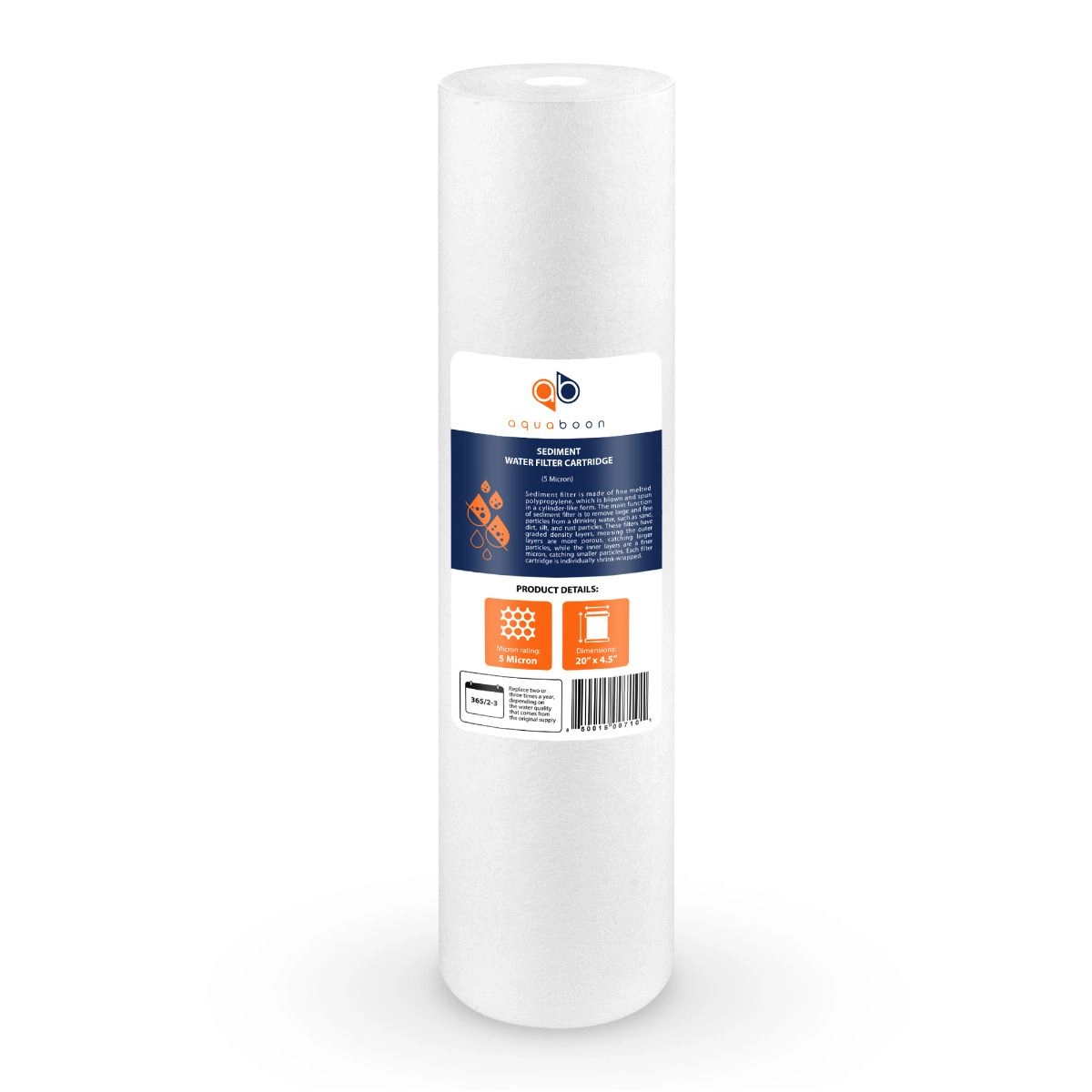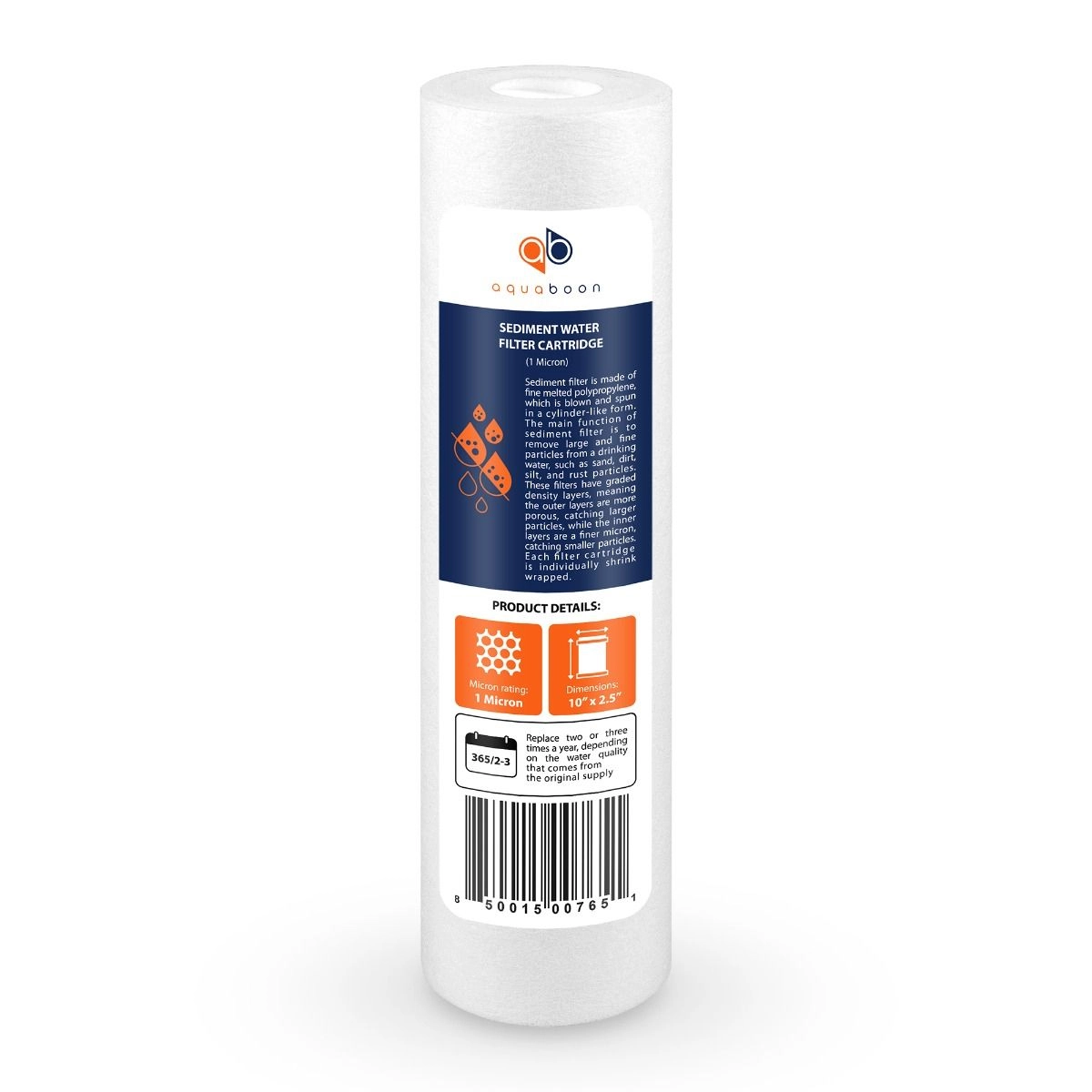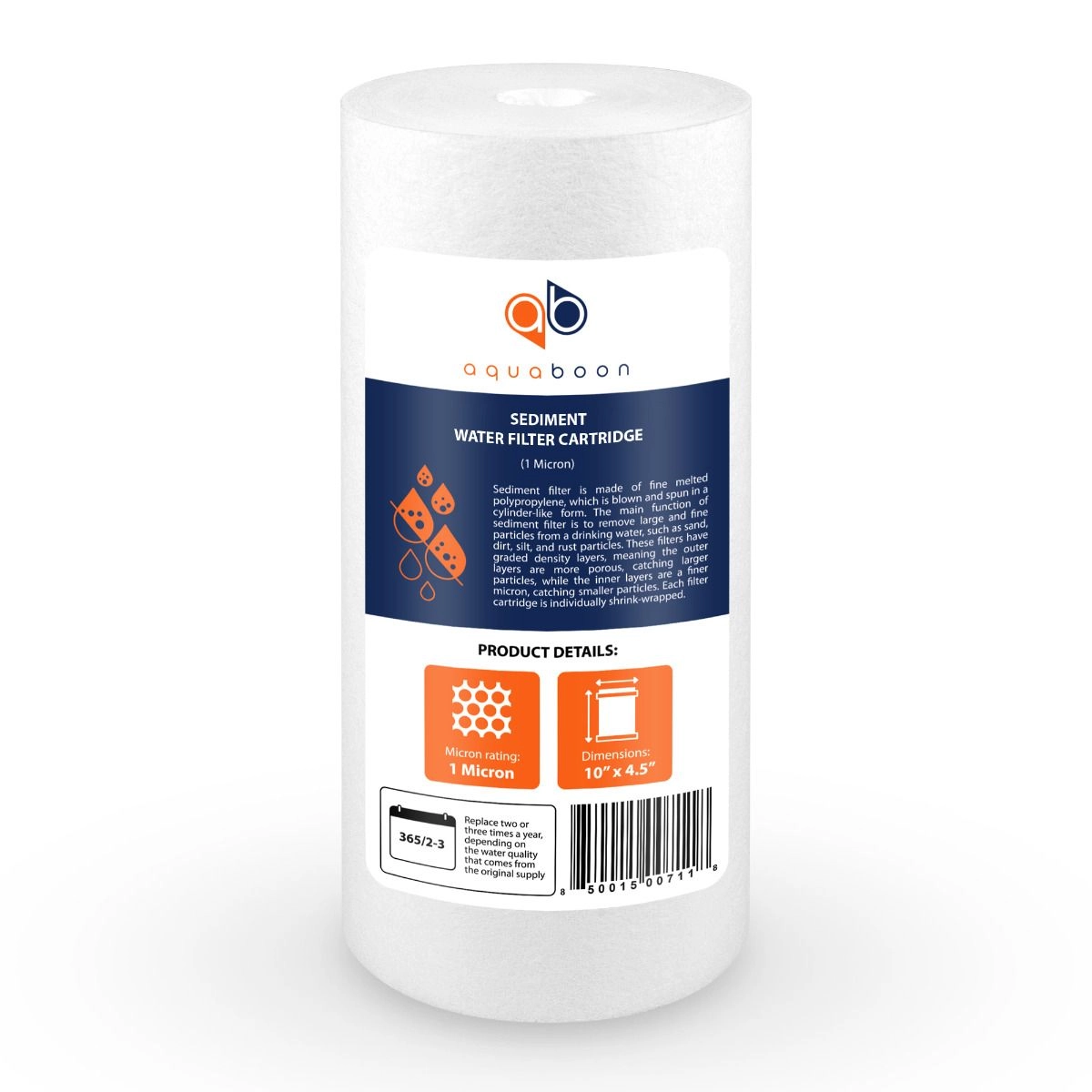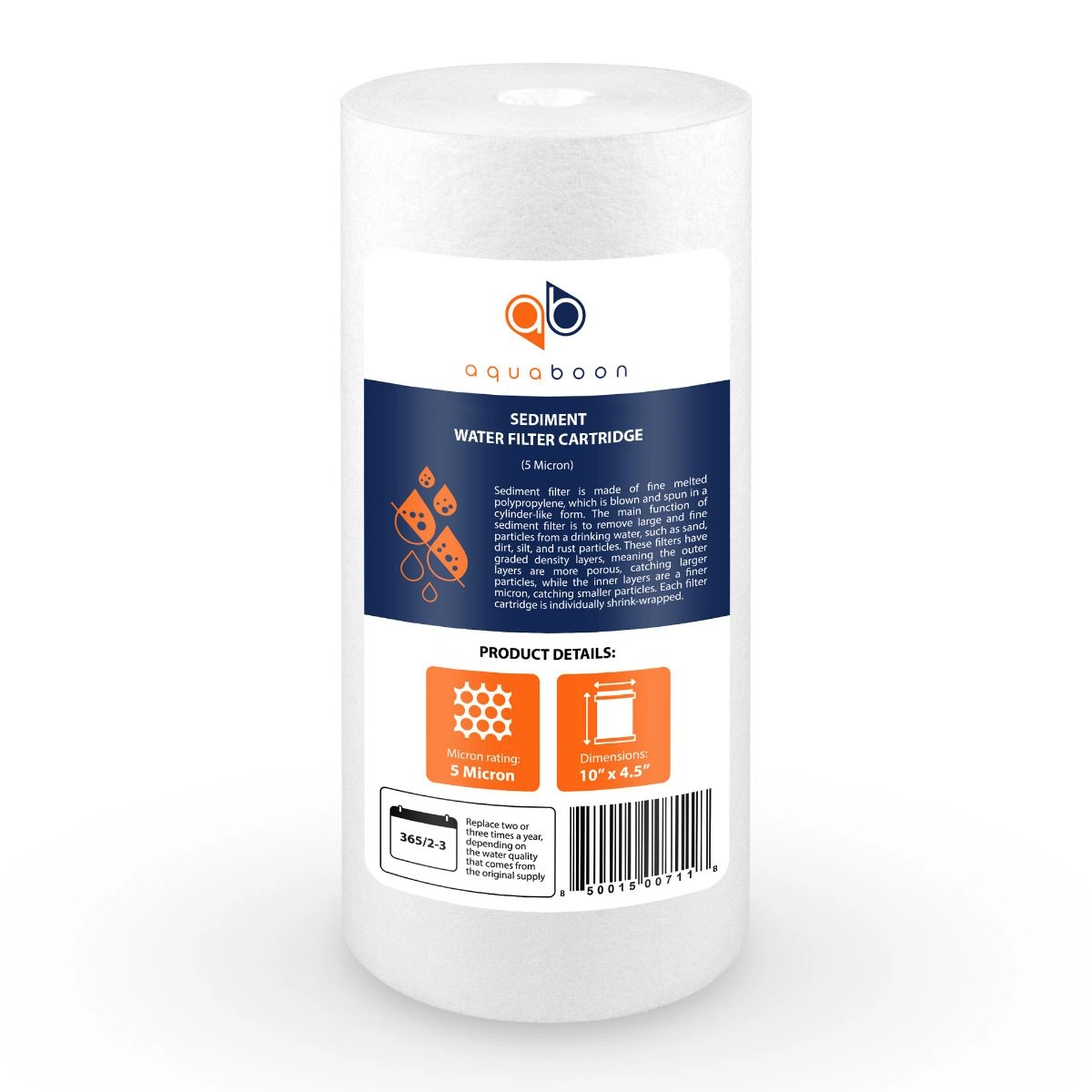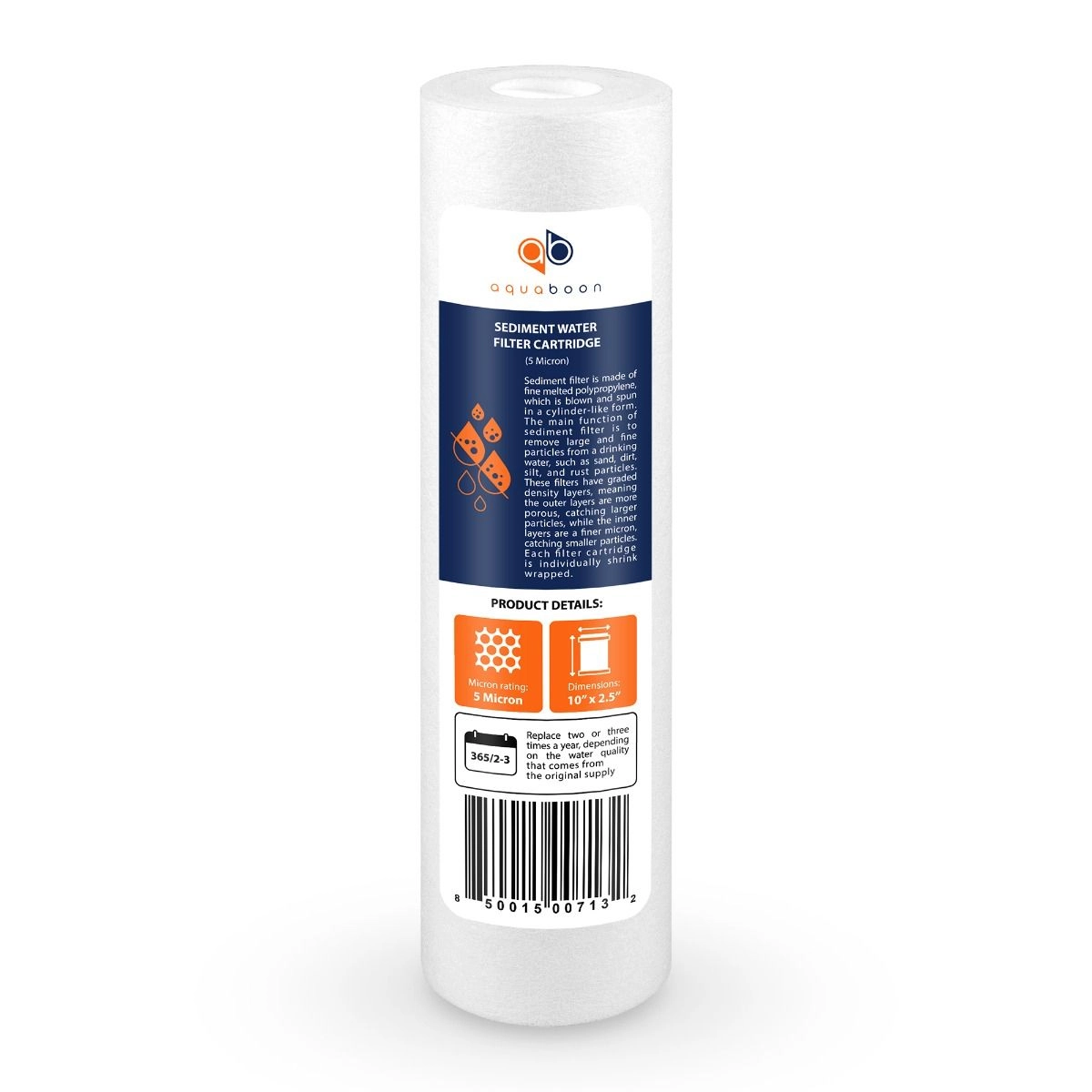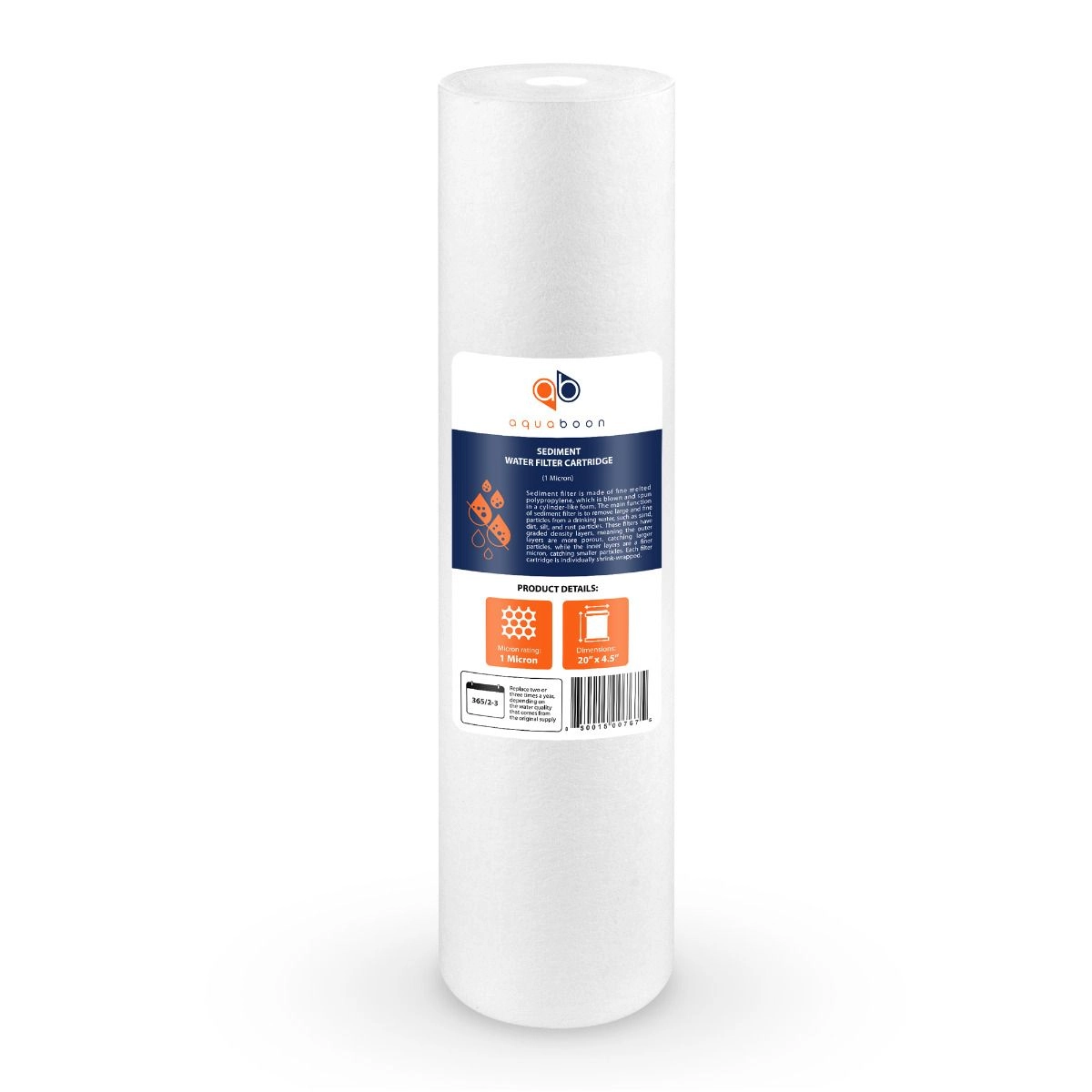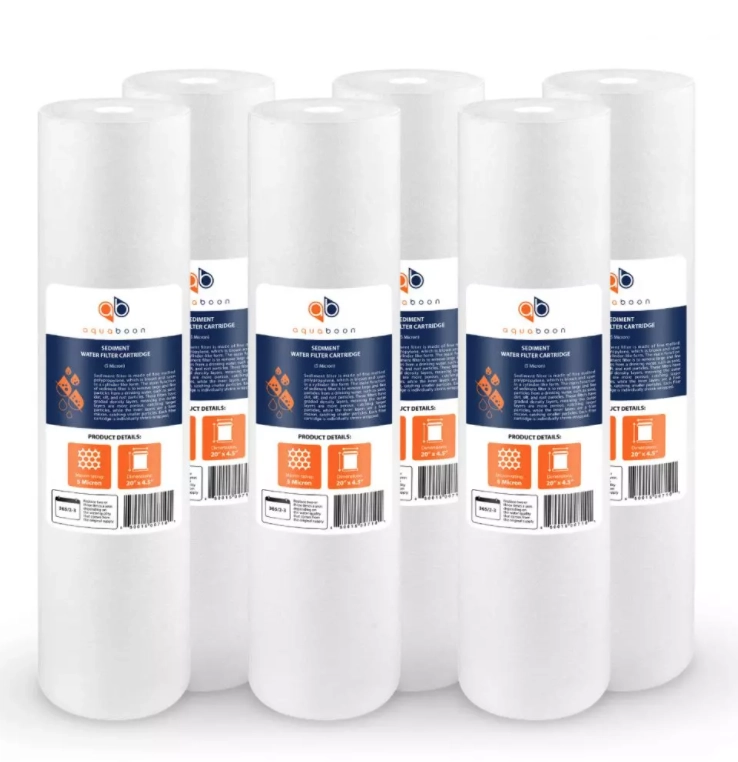Melt Blown Sediment Filters

- Aquaboon 1 Micron 10 x 2.5 Inch Sediment Water Filter Cartridge3 reviewsAs low as $19.79 As low as $8.95
Hydrating healthily is an everyday goal for many. However, if you are not taking advantage of melt blown filters, you are missing out on one of the most efficient water purification systems available.
Melt blown filter cartridges, as their names suggest, are decontamination mediums manufactured through the melt blowing technique. The material used is specifically unadulterated polypropylene fibres sintered into a cartridge.
Melt blown polypropylene filters offer high purification levels. Their multiple layers, whose fibres become more refined towards the cartridge’s core, amplify their dirt-holding capabilities.
These cartridges are also well appreciated by manufacturing plants and industries for their ability to hold up impressively well, even when subjected to aggressive chemicals. Furthermore, manufacturers also present grooved sediment filter cartridges that offer more extensive surface areas for confining more dirt, making them ideal for commercial applications.
Contaminants that melt blown filters can remove
Some of the pollutants a pp melt blown filter cartridge can extract include:
- Silt
- Soil
- Asbestos
- Sand
- Metal flecks
- Tiny leaves
- Particles
- Rust
- Particulate matter
- Dust
Note that these cartridges are only meant to sieve out dirt and debris - basically, insoluble substances that may make their way into your home’s water outlets. They will, however, not get rid of harsh chemicals, gases, or heavy metals. Neither will they improve the taste nor neutralize any pungent smells.
Additionally, understand that these cartridges are replaceable. As time goes by, they will hold on to enough dirt. To avoid incidents where they do not effectively remove debris—or maybe release some of the previously trapped dirt—switching the cartridge regularly is of the utmost importance.
Most often than not, manufacturers recommend performing replacements twice a year or as often as needed.
Features of this type of filter
Some of the notable characteristics of a pure melt blown polypropylene filter cartridge includes:
- Deep filtration: they have multiple layers of fibre and a graded pore structure, offering progressive and rigorous elimination of waste
- Chemical resistance: the cartridge’s manufacturing process involves using polypropylene, which can withstand harsh chemicals. So, they are the most preferred decontaminating medium in places where the water contains arsenic, lead, bleach, phosphates, pesticides, nitrates, and other hazardous chemicals.
- Low pressure: they exhibit excellent performance even with a drop in water pressure
- Longer working life: polypropylene is a high-quality material that holds up well in different applications. As such, you are assured of the cartridge’s durability.
- Certified: these cartridges are FDA approved, meeting industry standards.
At Filterway, facilitating access to clean water is our topmost priority. Therefore, we provide a comprehensive range of cartridges, including melt blown options. All pieces are made from superior quality materials and have impressive purification capabilities.
Contact us now to place your order.
FAQ
What are melt blown sediment filters?
Melt-blown sediment filters are a type of water filtration media created using a manufacturing process called melt-blowing. In this process, thermoplastic material is melted and extruded through tiny nozzles to form microfibers. These microfibers are then randomly deposited to create a filter matrix with microscopic pores. Melt-blown filters are known for their ability to effectively capture and remove solid particles, sediment, and fine debris from water. They are commonly used in various water filtration systems to improve water quality and clarity.
How do melt blown sediment filters work?
Melt-blown sediment filters work by using a manufacturing process called melt-blowing to create a matrix of microscopic fibers with random patterns. These fibers form a filter media with tiny pores that trap and capture solid particles and sediment as water flows through. The fine structure of melt-blown filters efficiently removes impurities, such as sand, silt, and debris, from water, resulting in improved water quality, and clarity, and the removal of suspended particulate matter that can affect taste and clog plumbing and appliances.
What types of sediment do melt blown sediment filters remove?
Melt-blown sediment filters are effective at removing a wide range of solid particles and sediment from water. Common contaminants they can capture include sand, silt, rust, scale, debris, and suspended solids. The fine filter matrix created during the melt-blowing process enables these filters to efficiently trap and retain these particles, improving water quality by removing sediment and particulate matter that can affect the clarity, taste, and overall purity of the water.
How often do I need to replace a melt blown sediment filter?
The replacement frequency for a melt-blown sediment filter depends on water quality and usage. Typically, these filters are replaced every 6 to 12 months in residential applications. However, in areas with higher sediment levels or if water flow decreases, more frequent replacements may be necessary. Regularly monitoring the filter's condition and adhering to the manufacturer's recommendations ensure that melt-blown sediment filters are replaced when needed, maintaining effective water filtration and system performance.

